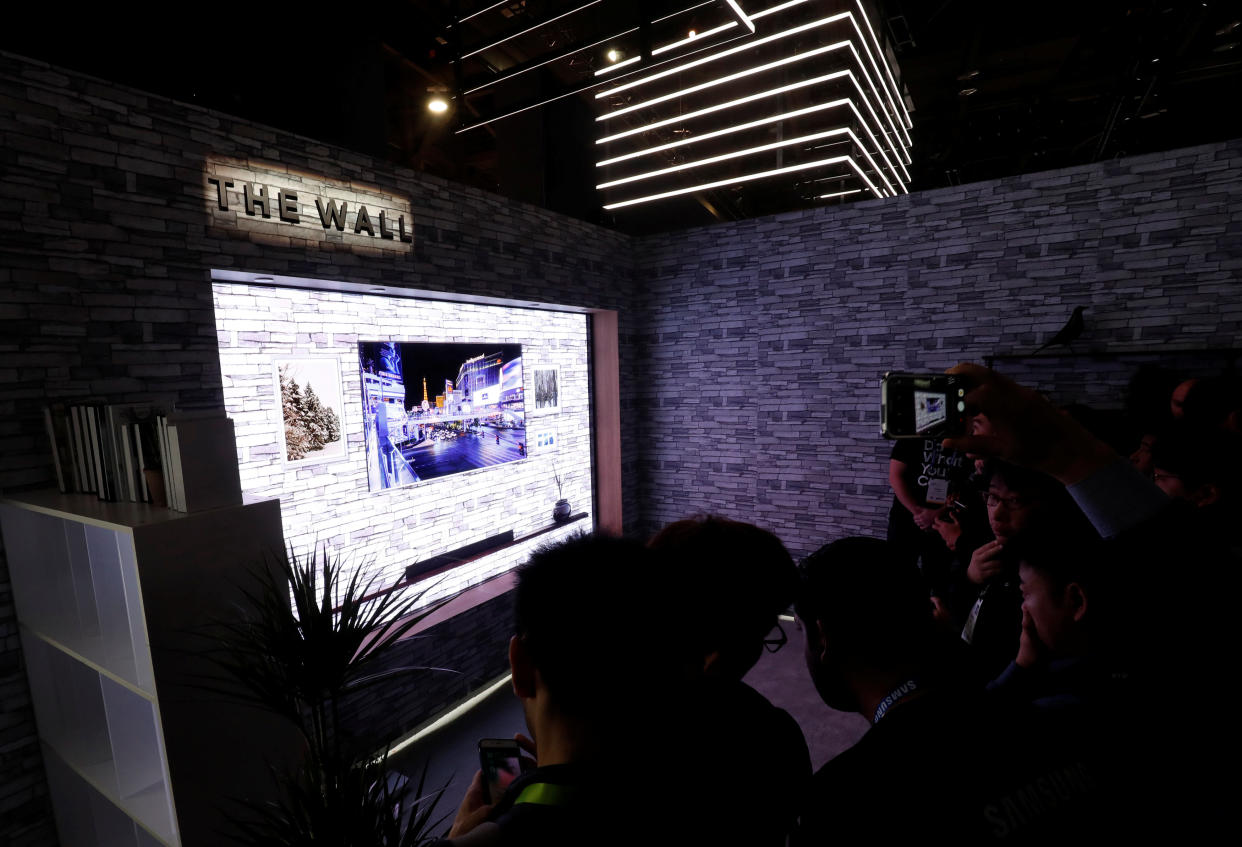CES 2018: The TV set will not be revolutionized

Ultra High Definition television sets will reach an impressive milestone this year: The Consumer Technology Association, the Arlington, Va.-based trade group that runs CES, predicts that UHD sets will make up half, 22 million out of 44 million, of all digital displays shipped to dealers in 2018,
That’s noteworthy for any TV technology that had its CES debut only six years ago. But it’s even more remarkable considering how UHD — also called “4K” for its almost 4,000 pixels of horizontal resolution — remains so scarce on the cable and satellite TV services that helped drive the rise of HDTV.
That momentum, however, doesn’t mean you should be among the people buying those 22 million UHD sets. If you’d rather wait on that upgrade, CES 2018 offers plenty of reasons to.
UHD’s endless evolution
The single biggest excuse to postpone a UHD purchase: The industry keeps revising its notion of good UHD.
Two years ago, that led to a second abbreviation showing up on UHD spec sheets: HDR, short for “high dynamic range.” Its wider array of colors and light are noticeable even on smaller screens, where the extra resolution of UHD can easily get lost. There’s also more than one flavor of HDR: Beyond the widely supported HDR10, there’s the souped-up HDR10+ as well as proprietary variants from Dolby and Technicolor.
The differences between them shouldn’t trouble non-videophiles. But picture purists may want to wait for more powerful processors that fine-tune your video even more. Samsung, for example, showed off a prototype 8K set (yes, for some people 4K isn’t enough) that used one such chip to make even standard-definition video look acceptably sharp on that 85-inch screen.
Broadcast and Blu-ray
The UHD feature far more people may put on their wish list is over-the-air broadcasts. The “ATSC 3.0” standard (also called “Next-Gen TV”) that will bring TV over the air as well as better HDTV reception is now ready for testing by TV stations — but sets with compatible tuners may not ship in the U.S. until next year.
“That’s looking more like a 2019 feature,” said Tim Alessi, senior director of product marketing for home entertainment at LG Electronics USA, during a Monday demo.
Samsung isn’t talking tuners yet either. “We’ll be able to talk a little more about that in our spring launch event,” said David Das, Samsung’s senior vice president of consumer electronics marketing, in an interview Sunday night.
In the meantime, UHD owners remain limited to streaming from the likes of Amazon (AMZN) and Netflix (NFLX) as well as the UHD Blu-ray discs. Das said Samsung UHD buyers are surprisingly likely to purchase one of its UHD Blu-ray players alongside that new TV: “The attach rate of 4K Blu-ray players is tremendous.”
OLED, LCD, LED and beyond
Most UHD screens use the same basic LCD architecture as HDTVs. But LG and such firms as Sony and Panasonic have also championed a competing technology called OLED (organic light-emitting diode).
Self-illuminating, non-backlit OLED screens, also found on some smartphones, can be much thinner and brighter and remain viewable from more angles. But they can also get frighteningly expensive — LG’s 75-inch W model, only .23 inches thick, sells for $14,999. The resulting price gap between OLED and LCD isn’t likely to shrink, even as LCD picture quality continues to progress.
“OLED prices have decreased significantly, but they are still much more expensive than most high-end LCD TVs,” said analyst Raymond Soneira, CEO of DisplayMate Technologies. “OLED TVs clearly provide the best picture quality and accuracy by far, but their higher price points appeal primarily to videophiles.”
Sunday night, Samsung unveiled a new rival to OLED: backlight-free MicroLEDs, shown off in a 146-inch “The Wall” prototype. This is nowhere near hitting stores, but the prospect of this technology becoming mainstream could be yet another reason to postpone a UHD purchase.
Personal assistants
With overall high picture quality and with most TVs sporting the same streaming-video apps, manufacturers are now rushing to embed personal-assistant apps.
Sony, for example, began shipping sets with the Google (GOOG, GOOGL) Assistant two years ago, and LG will do the same while offering Amazon’s Alexa as an optional download.
During the demo, LG’s Alessi hit a button on a remote to get Google listening and asked “when does CES end?” After Google replied with the show’s dates, he said “add it to my calendar.” Then he told Google to play “Moana” — but because CES is where bandwidth goes to die, the Netflix app could not buffer enough of the Disney (DIS) flick to start it.
If you’d rather talk to Apple’s (AAPL) Siri, you’ll have to buy an Apple TV or continue reaching for an iPhone or iPad.
Samsung, meanwhile, has opted for a none-of-the-above approach by bundling its own Bixby assistant. And TCL, the leading vendor of sets based on Roku’s (ROKU) streaming-media software, will be the first to offer a new Roku Entertainment Assistant that doesn’t aim to manage the rest of your life and instead just tries to keep you entertained.
That’s a less ambitious approach, but it also puts less data at risk should the TV stop getting security patches over a service life that should far outstretch that of a phone or computer. Waiting for the TV industry to address that concern could and should be yet another reason to hold off on buying a new high-end TV.
More from Rob:
What to expect from CES 2018, the biggest gadget show of the year
Your pay-TV rate might be increasing — here’s what you can do about it
2018 tech forecast: Expect more angst about privacy and net neutrality
Email Rob at rob@robpegoraro.com; follow him on Twitter at @robpegoraro.


